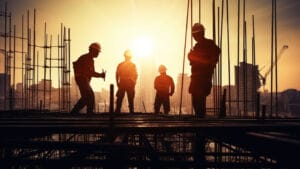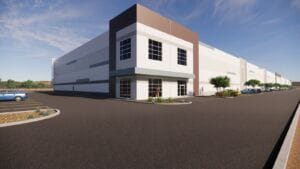While many turned their attention to Washington D.C. for the inauguration of President Donald Trump, the Valley’s heaviest hitters in commercial real estate joined forces at the 10th Annual IREM-CCIM Economic Forecast on Friday at the Arizona Biltmore.
For the program, 21 of the Valley’s top commercial real estate leaders with 521-plus years of combined CRE experience were selected to share market analysis, insights and predictions for scores of industry professionals looking to get the real scoop on what’s ahead in 2017.
Before the forecast discussion began, Jerry Colangelo took the stage to award Sandra Watson, president and CEO of Arizona Commerce Authority, with the 2017 Impact Award for her efforts in attracting more than 750 companies to Arizona that have invested nearly $10 billion in capital and created 125,000-plus jobs.
Then the speakers — who account for millions of square feet and billions of dollars worth of product — starting taking the stage for their respective panels, which each focused on a specific sector: industrial, office, multifamily and retail.
For the first time in a few years, multifamily wasn’t “the belle of the ball.” Instead most of the excitement was for the industrial and office markets in the Valley.
INDUSTRIAL
Led by moderator Mark Stapp, executive director of the Master of Real Estate Development program at Arizona State University, the panelists fielded questions about what’s hot, where and why.
Pat Feeney, senior vice president at CBRE, predicts more industrial deals with heavy rail service will be coming down the pike in 2017. He says in 2016, his firm closed six rail service deal compared to the previous averages of one per year.
All the panelists agreed the biggest challenge facing the industrial market is construction costs.
Megan Creecy-Herman, vice president of leasing and development at Liberty Property Trust, sees multi-tenant industrial projects are growing in demand, but are also challenging to secure capital financing for, according to Steve Lindley, senior managing director of capital markets at Cushman & Wakefield.
Overall, the outlook for the industrial market is strong. Demand is high. Supply is limited, which Lindley says is promising. He thinks cap rates will prevent the over building of industrial projects.
Keep an eye on a project in Southwest Valley called First Industrial where Creecy-Herman said her firm is constructing an 800,000-square-foot spec industrial building.
OFFICE
“It’s all about employee experience,” said panelist John Strittmatter, chairman of Ryan Building Companies’ Southwest Region.
He pointed to Marina Heights in Tempe, a multi-year, two million-square-foot, mixed-use campus, as an example of how the right Class A office space can help recruit and retain a qualified workforce.
Strittmatter manages the development and construction of Marina Heights, which fellow panelist Barry Gabel, executive vice president of CBRE, said, “completely changed the fabric of the Tempe submarket.”
The panel identified other companies in the Valley that are tailoring its offices to facilitate a desirable work environment.
For example, GoDaddy’s Global Technology Center with a two-story slide and indoor racetrack for pedal kart races. Another is Zenreach at the Biltmore Center, which caters food every day for employees and provides a keg each Friday afternoon.
Gabel predicts Downtown Tempe and the Camelback Corridor will be hot markets for office space this year.




